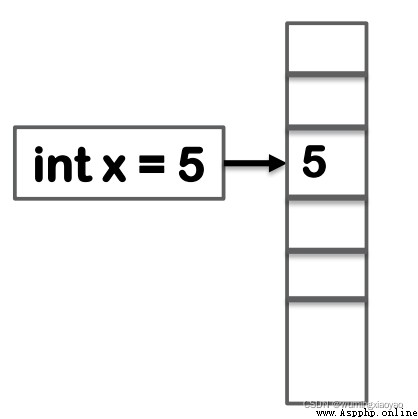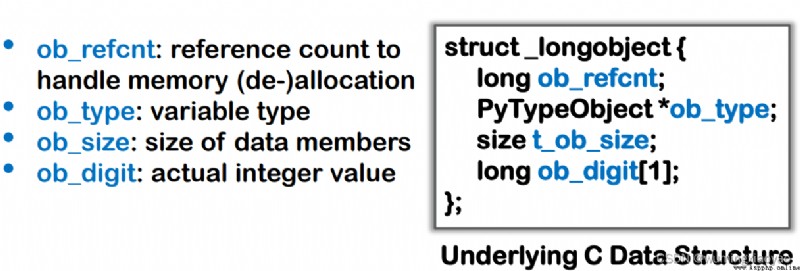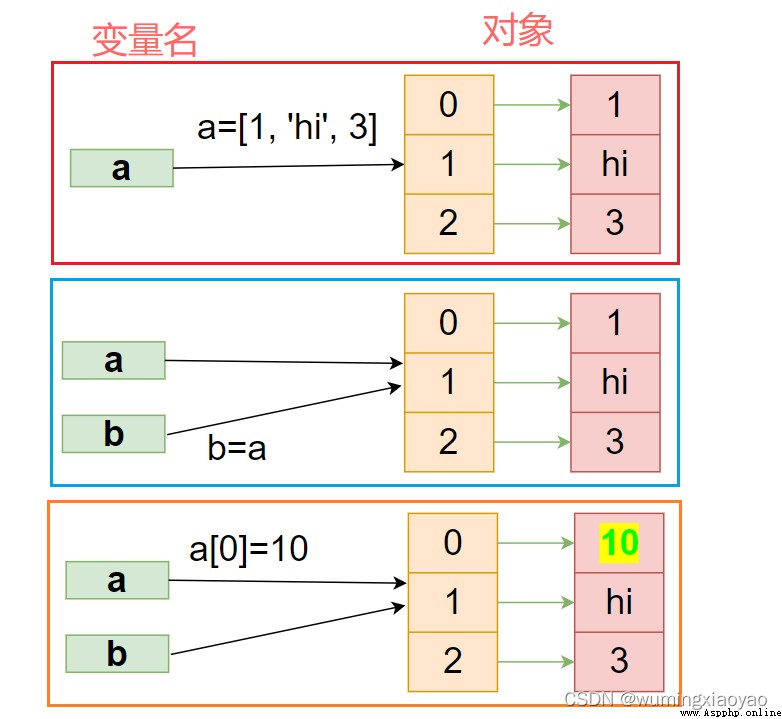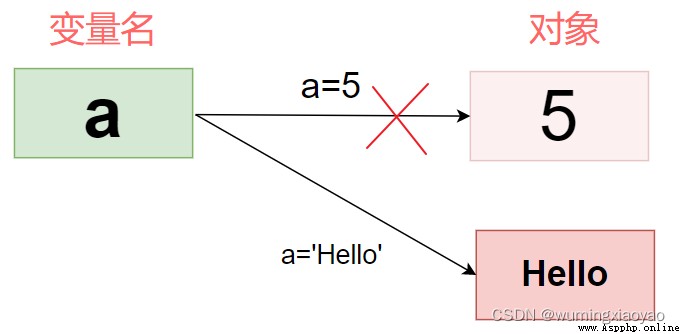Refer to some online materials , Thanks for sharing . This article will delve into Python The characteristics of dynamic types ,Python Everything is the object . more Python Advanced Series , Please refer to Python Advanced learning Play data series
Summary :
Python Is a dynamically typed language : So-called Python Dynamic type , It is to automatically determine the type of object in the process of program operation .
Dynamic type (dynamic typing) yes Python An important core concept .Python The variable of (variable) No declaration required , While in assignment , Variable can be reassigned to any value , These are all related to the concept of dynamic typing .
Static type (static typing) In language , The type of variable must be declared first , That is, the type of variable has been determined at the moment of creation , Later in use , You can only assign this specified type of data to variables . If you force other irrelevant types of data to be assigned to it , Will cause an error .Java Is a dynamically typed language .
Static type assignment :
int x = 5; Variable x Saved values 5, Not the address .
The base type stores the actual value , Instead of a reference to an object , So when you assign a value to it , It is directly assigned from one place to another , In this case, the assigned value is the data value saved by the variable .
Dynamic type assignment :
x = 5 Variable x Point to object 5 References to .

stay Python in , Everything is the object . An object is an entity stored in memory . But we don't have direct access to the object . The object name we write in the program , Just a reference to this object (reference). Reference and object separation , It's the core of dynamic types . A reference can point to a new object at any time , This variable is created when it is assigned to a variable for the first time , The values are associated in the subsequent assignment process .
Variables have no type ,Python Types in only exist in objects , Only the value of an object has a type , Variables are generic , It simply refers to a certain type of object at a certain time in the program . Like defining a =1 ,a = ‘a’, The variable was defined at the beginning a For an object that points to an integer , Then the variable points to an object of type string , so , Variables are of variable type .
When we assign values to variables , such as a=5,python Perform three different operations to complete the assignment .

Variable references are implemented as pointers in memory . Once the variable is used , that Python Automatically connect to the object of the variable . say concretely :
Multiple variables refer to immutable objects , Share immutable object references :
a = 'Hello'
b = a
print("before a:{}".format(a))
print("before b:{}".format(b))
a = "Hi"
print("after a:{}".format(a))
print("after b:{}".format(b))
Output :
before a:Hello
before b:Hello
after a:Hi
after b:Hello
a = 'Hello', Variable a Point to a string object in memory 'Hello' References to
b = a, Variable b It should point to a variable a The value of the object address pointed to Also point to the object 'Hello' References to .
a = 'Hi', Variable a Point to a string object in memory 'Hi' References to
here , Variable a No longer point to object 'Hello', Change variables a The object pointed to does not affect b Value , Variable b Still point to the object 'Hello'

So for immutable objects ,Python A variable in is always a pointer to a specified object , Instead of changing the label of the memory area , That is to assign a new value to a variable , Instead of replacing the original value of an object , Instead, create a new object for variable reference
Multiple variables refer to variable objects , Shared mutable object references :
a = [1,'hi',3]
b = a
print("before a:{}".format(a))
print("before b:{}".format(b))
a[0] = 10
print("after a:{}".format(a))
print("after b:{}".format(b))
Output :
before a:[1, 'hi', 3]
before b:[1, 'hi', 3]
after a:[10, 'hi', 3]
after b:[10, 'hi', 3]
a = [1,‘hi’,3]
Variable a Point to One list List objects .list A list object is a reference that contains multiple objects ( Each reference points to an object ,a[0] Point to object 1,a[1] Point to object ‘hi’ ,a[2] Point to object 3)
b = a
Variable b And point to this list List objects .
a[0] = 10
It's not about changing variables a The direction of , It's right a[0], That is, part of the table object ( An element ), To operate , So all references to this object are affected .
In contrast , Our previous assignment operations have no effect on the object itself , Just change the reference to

For mutable objects , Variables do not create a new object , Instead, it follows the previous object , Even if the object has been changed . It can be simply understood as , Both objects point to the memory address of a list at the same time , The list maps the memory addresses of the elements inside , Variable sharing doesn't care about list changes , They only care if the memory space of the list changes , therefore , Mutable objects can change themselves when they are referenced , So there is no need to create new objects , So the shared objects will change with the changes of the previous objects .
A list can reference its elements , Change the object itself (in-place change). This object type , They are called variable data objects (mutable object), Dictionaries are also such data types .
And like the previous numbers and strings , You can't change the object itself , You can only change the direction of the reference , It's called immutable data objects (immutable object).
Each object has two standard headers , One is the type identifier , Used to mark the object type , The other is the reference counter , It is used to determine whether it is a recyclable object . Obviously , stay Python Only objects in the are classified , A variable simply refers to an object , Variables do not have category distinctions , He just refers to a specific object at a specific time .
For the use of reference counters , Then associated to Python Garbage collection mechanism , When a variable name is assigned to a new object , Then the address space occupied by the old objects will be recycled . The space of old objects is automatically put into the memory space pool , Wait for later objects to use .
for example :
a=5
a='Hello'
In the first sentence ,5 Is an integer object stored in memory . Through the assignment , Variable a Point to object 5 References to .
In the second statement , Create objects in memory ‘Hello’, Is a string (string). Variable a Yes ‘Hello’ References to objects . here , object 5 There are no more references to it .Python The object without reference will be destroyed automatically (destruct), Release corresponding memory .
How does the counter work in the garbage collection process ? The counter records the current number of references to the object , If the counter is set to at some time 0, Is not referenced , Then the memory space of this object will be reclaimed .
Garbage collection of objects has great significance , This makes us in the Python You can use any object in and you don't need to consider freeing up space , No C And C++ A lot of basic code in . For small integers or short strings , The counter is not marked as 0 It's taken back . This sum Python The caching mechanism ,Python Will cache these objects , Instead of building and destroying them frequently . For general objects ,Python Applicable to garbage collection .
Small integers :
because 111 Objects are cached , therefore Variable a, b, c It's pointing to the same object 111
a=111
b=111
c=a
print("a == c:{ }".format(a == c))
print("a == b:{ }".format(a == b))
print("a is c:{ }".format(a is c))
print("a is b:{ }".format(a is b))
Output :
a == c:True
a == b:True
a is c:True
a is b:True
Short string
because ‘111’ Objects are cached , therefore Variable a, b, c It's pointing to the same object ‘111’
a='111'
b='111'
c=a
print("a == c:{ }".format(a == c))
print("a == b:{ }".format(a == b))
print("a is c:{ }".format(a is c))
print("a is b:{ }".format(a is b))
Output :
a == c:True
a == b:True
a is c:True
a is b:True
Parameters x It's a new quote , Point to a Object referred to . If the parameter is immutable (immutable) The object of ,a and x References are independent of each other . For parameters x The operation of does not affect the reference a. Such a transmission is similar to C Value passing in languages .
def f(x):
x = 100
print("x:{}".format(x))
a = 1
print("before a:{}".format(a))
f(a)
print("after a:{}".format(a))
Output :
before a:1
x:100
after a:1
If it's delivered variable (mutable) The object of , So changing the function parameters , It's possible to change the original object . All references to the original object are affected , Pay attention to this problem when programming .
def f(x):
x[0] = 100
print("x:{}".format(x))
a = [1,2,3]
print("before a:{}".format(a))
f(a)
print("after a:{}".format(a))
Output :
before a:[1, 2, 3]
x:[100, 2, 3]
after a:[100, 2, 3]